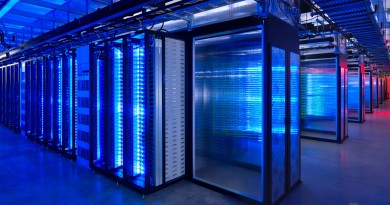Calculating Data Center Cooling Requirements
Most electrical equipments generate heat. This must be taken care of, to prevent the equipment temperature from increasing to an intolerable level. For the most part of IT equipment and other equipment existent in a data center is air-cooled. Setting up a cooling system requires a considerate amount of understanding of the amount of heat produced by the equipment. This article explains how to estimate heat output from IT equipment and other devices in a data center such as UPS, for purposes of sizing air conditioning systems, lighting, and power backup.
With the implementation of scalable “pay as you use” uninterruptible power supply (UPS) design, it’s getting simpler to set up these systems. As the needs of the data center grow they allow the data center manager to plainly add modules. On the other hand, it is effortless to lose sight of the future electrical needs of the data center or data room inside a well-built provision. The power requests of the various elements may vary to a large extent from each other. However, using simple rules it can be accurately calculated using the power requirements of the premeditated IT loads along with calculating the size of the electrical service, these elements can be used to calculate approximately the power output ability of a standby generator system. This can be done only if it is requested for the data center loads.
This article discusses some of the concerns to be taken into consideration in calculating the data center cooling requirements.
Determining electrical power output of the system:
Data centers are sometimes a part of a building. The steps in shaping the electrical capacity will lend a hand in calculating the requirements for that portion of the building devoted to the data center room. The dissimilarity between the steady state power and the peak power is significant to determine power capacity requirements of data center. The total heat output of a system is the sum of the heat outputs of the components. The complete system consists of IT equipment, along with other equipments like UPS, Power Distribution, Air Conditioning Units, Lighting, and People involved. Luckily, the heat output rates of these equipments can be effortlessly calculated through simple means.
The heat produced by UPS and Power Distribution systems is steady across equipment brands and models and so they can be approximated without significant error. Lighting and people can also be easily calculated by means of standard values. Some of the parameters required to determine the cooling load for the complete system are easily obtainable values. They include the floor area in square feet, and the charged electrical system power. Air conditioning divisions create a considerable amount of heat from fans and compressors. This heat is bushed out to the outside and does not generate a thermal load within the data center. However detract from the competence of the air conditioning system and is usually credited when the air conditioner is sized.
Other heat producing equipments:
Natural heat such as sunlight through windows and heat conducted in from outside walls must also be taken into consideration. Most small data centers and network rooms lack walls or windows. On the other hand, for large data centers with walls or a roof out in the open to the outdoors, the extra heat that goes inside the data center must be removed by the air conditioning system. In case the data center has important wall or ceiling coverage to the outside in that case heating, Ventilation, an Air Conditioning adviser must pitch in. He will examine the utmost thermal stack and this should be added to the thermal requisite of the absolute system.
Size of air conditioner:
Only after the cooling requirements are determined, it is feasible to size an air conditioning system. Some of the factors stated below must be taken into consideration for the sizing of the cooling load of the equipment. This also includes electrical power equipments. Some of them are:
- The volume of the cooling load in the building
- Excess sizing for upcoming requirements
- Excess sizing to report for humidification impacts
- Excess sizing that would generate redundancy
The Watt loads of each of these issues can be summed up to establish the total thermal load in data center
Data Center Talk updates its resources every day. Visit us to know of the latest technology and standards from the data center world.
Please leave your views and comments on DCT Forum


